|

Heroes
and History
Makers of the RCN
|
Bernays, Max, CPO
Brooke, Margaret
Martha, LCdr, RCN
Dube, Rachel Mari-Anna
(nee Richard) (aka Mama Camille)
Gray, Robert, Lt, VC
Harrison Brothers
Hose, Rear-Admiral Walter
Kingsmill, Admiral Sir Charles Edmund
|
Landymore, Rear-Admiral
William (Bill) Moss
Maitland-Dougall,
William, Lt
Ng Muk Kah, B.E.M. (aka Jenny of Jenny's Side Party, Hong Kong)
Paddon, Stuart Edmund,
Rear-Admiral
Sherwood, Frederick
Henry, LCdr
Stubbs, John Hamilton,
LCdr
|
|
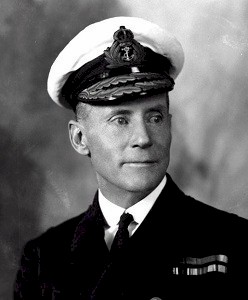
|
Rear-Admiral
Walter Hose
Born with sea salt in his blood, Hose had two good reasons for joining
the Royal Canadian Navy. The first was the opportunity for promotion,
and the second had everything to do with making an impact on the young
service. After transferring from the Royal Navy to the RCN in 1911, he
rose to become Director of Naval Service by 1921, a position he held
for 13 years, through five different cabinet ministers. Under his
guidance, the navy built its plans around what the government would
support, established a nationwide footprint through the reserve
system, built a tough little fleet of destroyers and established a
clearer vision of itself, supported by smart policy. In short, he laid
the groundwork for the navy as it prepared for the Second World War.
Restore
the Honour- Walter
Hose, Father and Saviour of the RCN
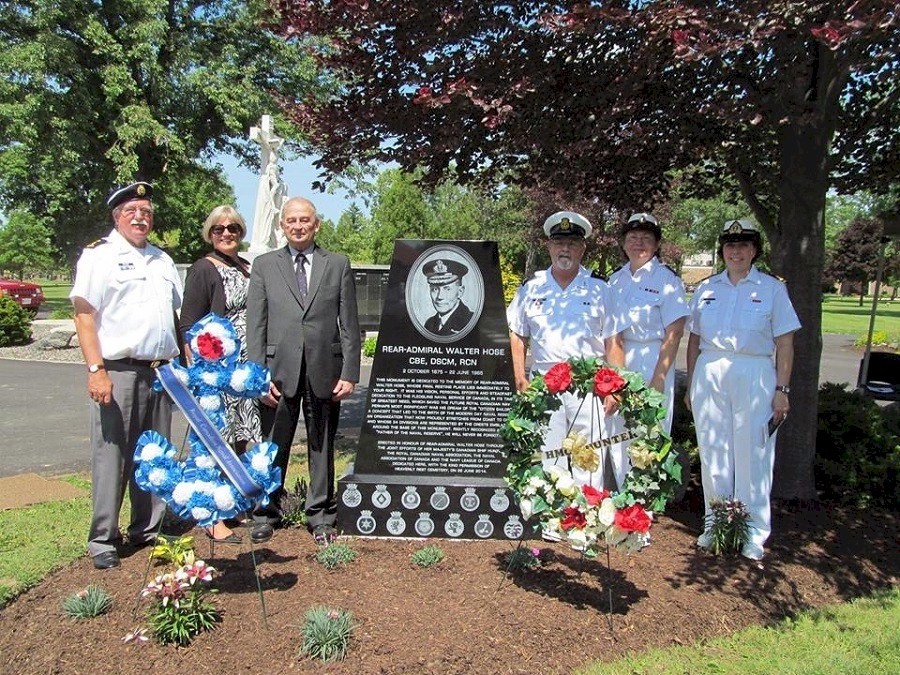
This
monument is dedicated to the memory of Rear-Admiral Walter Hose, whose final
resting place lies immediately to your right. It was his vision, personal
efforts and steadfast dedication to the fledgling Naval Service of Canada,
in it's time of greatest need, which saved the future Royal Canadian Navy.
Perhaps most significant was his dream of the "Citizen Sailor", a
concept that led to the birth of the modern day Naval Reserve, an
organization that now proudly stretches from cost to coast and whose 24
divisions are represented by the crests emblazoned around the base of this
monument. Rightly recognized as the "Father of the Naval Reserve",
he will never be forgotten.
Erected
in Honour of Rear-Admiral Walter Hose through the joint efforts of Her
Majesty's Canadian Ship Hunter, The Royal Canadian Naval Association,
The Naval Association of Canada and the Navy League of Canada.
Dedicated here, with the kind permission of Heavenly Rest Cemetery, on
22 June 2014. Photo
of the monument courtesy of Phil Beausoleil
|
|
|

|
Admiral
Sir Charles Edmund Kingsmill, CMG, RN
Admiral
Kingsmill was born in Guelph, Canada West in 1855, and joined the
Royal Navy (RN) as a Cadet in 1869. After an illustrious carrier in
the RN, he retired as as Rear-Admiral in September 1908. In May of
1908 he was appointed Commander Canadian Fishery Protection Service
and later Director Marine Services of the Department of Marine and
Fisheries (Canada). In May 1910 he became the first Director of the
Naval Service of Canada and subsequently was promoted to Vice-Admiral
on the RN Retired List in 1913. Admiral Kingsmill was promoted to his
current rank, on the RN retired list, in April 1917. He continued to
serve as Director of the Naval Service until his departure in 1920. He
died 15 August 1935.
Admiral
Sir Charles Edward Kingsmill
|
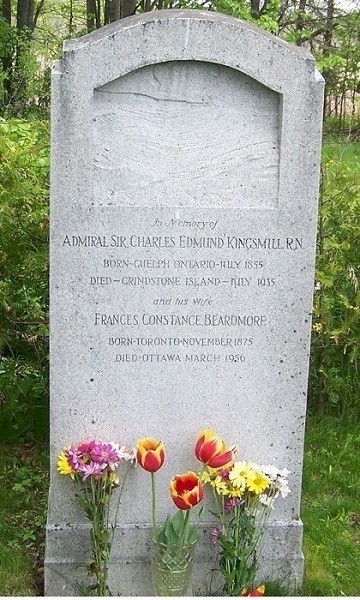
Headstone
of Admiral Sir Charles Edmund Kingsmill |
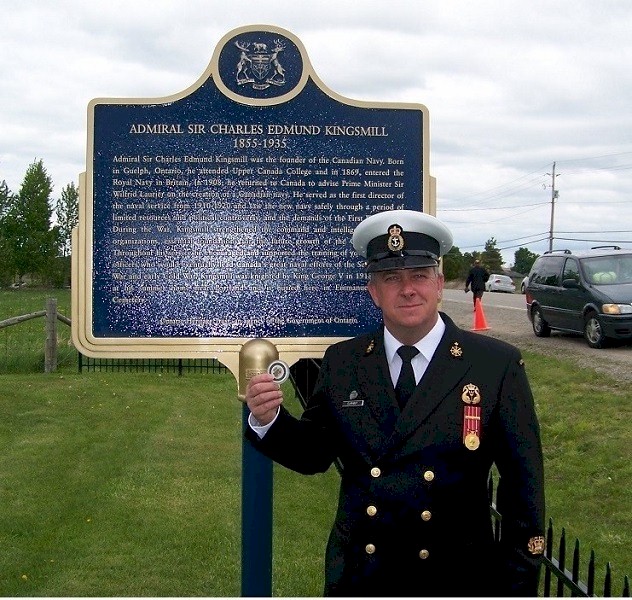
A memorial in
honour of Admiral Kingsmill and his service to the fledgling RCN (right) |
Courtesy
of Peter Clarabut, CPO2, RCN
Double
click on the photos to view a larger image
|
|
|
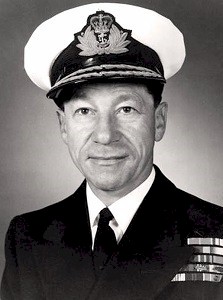
|
Rear-Admiral
William (Bill) Moss Landymore
Decorated
in wartime after two ships were sunk under him, he rose to the top of the RCN
only to defy Ottawa's plan to integrate the military. As a result, he lost his
job, but won the hearts of the rank and file Two decades after he fought the
German and Japanese navies during the Second World War, Rear Admiral Bill
Landymore threw himself into the battle of his life when he took on the
government of Canada in an epic struggle that transfixed the nation. It
was arguably the most controversial defence issue in Canadian history and Rear
Adm. Landymore, who at 50 could have served five more years, had gone down
guns blazing in the best naval tradition. In two years, the RCN's six senior
admirals had been retired prematurely or fired. Generals and air marshals had
also left.
Click
here to read the MARGEN sent by Rear-Admiral Landymore on his final day in
the RCN
|
|
|
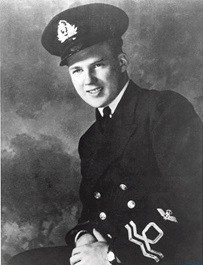
|
Lt
Robert Gray, VC, RCNVR
British
Columbia's Robert Gray was a member of the Royal Canadian Naval Volunteer
Reserve who was serving as a pilot with the Royal Navy’s Fleet Air Arm in
the Far East. He earned a Victoria Cross in the final weeks of the Second
World War for his actions on August 9, 1945. On that day, Gray attacked a
Japanese warship and was hit by heavy
anti-aircraft fire. Despite the damage, Lieutenant Gray continued his attack
and scored a direct hit on the Japanese escort vessel Amakusa, sinking it.
Sadly, Gray did not survive. Photo: Department of National Defence.
Source: Canadian
Virtual War Memorial
At
age 25 he'd been awarded the Victoria Cross, Distinguished Service Cross,
39-45 Star, Atlantic Star, Africa Star, Pacific Star, Defense Medal,
Canadian Volunteer Service Medal with Overseas Bar, War Medal with Mentioned
in Dispatches Oak Leaf.
|
|
|
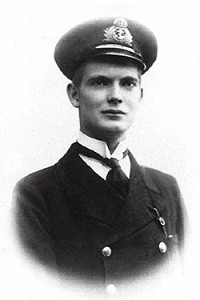
|
Lt
William Maitland-Dougall, RCN
Lt
William Maitland-Dougall, RCN - Canada's only submarine commanding officer
lost in action
On
March 7, 1918, Lt. Maitland-Dougall, RCN, took D3 to patrol off Le Havre,
France. He was in high spirits – it would be a short patrol and he would be
ashore in time to celebrate his 23rd birthday. But D3 did not return. What
happened was not revealed to the grieving relatives of the crew until several
years later. Bombs dropped by a French airship on March 12 sank D3 – the
French had not known the Allied submarine recognition signals. Maitland-Dougall
and his crew fought to save her but she was lost with all hands. (British
divers located the wreck of D3 in 2007.) The Royal Canadian Navy has never
officially recognized the accomplishments of Lt. Maitland-Dougall, RCN, then
or now. Indeed, few modern submariners have even heard his name. Maitland-Dougall
was the first and only Canadian submarine commanding officer to be lost in
action. He also remains the youngest to earn command. (Source: CFB
Esquimalt Naval and Military Museum)

Article from the Victoria Times Colonist
02 Aug 2024
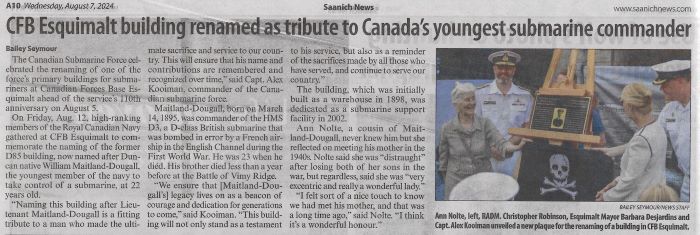
Article from the Saanich News 07 Aug 2024
|
|
|

|
Rear-Admiral
Stuart Edmund Paddon, RCNVR, RCN
Paddon was a member of HMS Prince of Wales crew
during the Battle of the Denmark Straight and fatal encounter with
Japanese aircraft near Malaya.
The
RCNVR provided a small but important role for the Royal Navy's early
Radar Systems.
May 27,
1941: The German battleship Bismarck is sunk. Several days earlier,
Canadian officer Stuart Paddon was witness to one of the most
infamous encounters in naval history - the Battle of the Denmark
Strait on May 24. Paddon, then just a sub lieutenant in the RCNVR,
was the radar officer on board HMS Prince of Wales, the brand new
British battleship assigned along with HMS Hood to sink the
Bismarck.
Paddon
was in charge of the Prince of Wales' many radar systems - ten, the
most numerous on any warship to date. In the early days of the war,
radar remained somewhat of a mystery to many - its concepts often
misunderstood and technical expertise even rarer. Thus, the Royal
Navy (RN) had a difficult time finding suitable officers to operate
them. This was compounded by the fact that the Royal Air Force had
taken most of the home talent to operate their systems watching
British skies.
Paddon
and his classmates were in the final year of their undergraduate
Physics degree at the University of Western Ontario (UWO) in
September 1939. That school year, an unusual curriculum was offered
to them by the department head, one that focused on electronics. At
the time, electronics was a subject for post-graduate courses, not
undergrad. As it turned out, the RN was somewhat desperate for
expertise and had approached the RCN about the matter, which in turn
passed it on to the National Research Council, and thence to the
universities in Canada. In 1940, Paddon and his cohort, now with
some electronics training, enlisted and were sent across the
Atlantic.
But
back to May 24: Paddon, sitting in the room responsible for the
Prince of Wales' Type 281 radar, was monitoring the chase against
the Bismarck. Clear on his screen were three contacts: Bismarck, the
heavy cruiser Prinz Eugen, and a third supply ship. Dutifully, he
relayed the coordinates of the enemy ships to the Prince of Wales'
gunnery controllers. However, due to the lack of practice on the
part of the ship's crew, the gunnery controllers did not take note
of Paddon's information. Using traditional optical means, the Prince
of Wales nevertheless managed to score hits on the Bismarck...but
not before HMS Hood was hit and sunk with only three survivors. It
is impossible to know whether better adherence to Paddon's radar
information could have saved the Hood. Meanwhile, the chase wore on,
and Paddon's only information about the battle was through his radar
screen, on which he could actually see the radar reflections coming
from Bismarck's 15" shells flying through the air.
Paddon
would continue to serve on the Prince of Wales until that ship's
demise at the hands of Japanese bombers off Malaya in December 1941.
Paddon was fortunate to have survived that sinking and was rescued
by one of the escorting destroyers. He spent some months at Ceylon
as the Port's Radar Officer, repairing incoming vessels' radar
systems, before returning to Canada. During his duty in Ceylon, he
noted that many British warships' radar officers were his old
classmates from UWO, or were at least Canadian - a small but crucial
role often forgotten in history. Paddon continued to serve in the
Royal Canadian Navy until retiring in 1972 with the rank of Rear
Admiral.
Courtesy of John Hawley
Original source of this article is unknown
|
|
|
Larry,
Thomas, Gordon, Clifford and Arthur Harrison
Born
in Picton, Ontario, the Harrison brothers all joined the Royal Canadian Navy;
the only known occasion where 5 brothers served in the RCN at the same
time. In
the left photo, in happier times Harrison brothers are all wearing their
square rig. In the right hand photo, after unification, they came together as
pallbearers for their father's funeral.
|
|
|
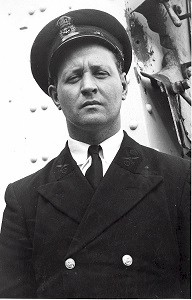
|
CPO
Max Bernays, RCNR
Max
Bernays (January 3, 1910 - March 30, 1974) was a Royal Canadian Naval
Reserve Acting Chief Petty Officer who fought in the Battle of the Atlantic
during the Second World War. He was awarded the Conspicuous Gallantry Medal
for his actions aboard HMCS Assiniboine on August 6, 1942.
On
August 6, 1942, the Assiniboine engaged the German U-Boat U-210. A fierce
gun-battle ensued, causing a major fire aboard the Assiniboine.
Lieutenant-Commander John H. Stubbs, commander of the Assiniboine,
maneuvered the vessel to ram the U-Boat. Bernays ordered his telegraph
operators who were giving orders to the engine room to leave, as the fire
began to surround the wheelhouse. Bernays manned the helm and did the work
of the two telegraph operators while Stubbs gave orders to ram U-210. As
the gun battle grew in intensity, Assiniboine rammed U-210 abaft of her
conning tower, crippling the submarine. 38 of the 48 German crew were
rescued. Assiniboine's losses were minimal, with one killed and 13 wounded.
Bernays
was awarded the Conspicuous Gallantry Medal for his heroic actions. His
actions displayed such a degree of courage that Rear Admiral L.W. Murray
recommended him for the Victoria Cross. Rear Admiral L.W. Murray believed that
"the manner in which this comparatively young rating remained at his
post, alone, and carried out the 133 telegraph orders as well as the many helm
orders necessary to accomplish the destruction of this submarine, whilst the
wheelhouse was being pierced by explosive shell from the enemy's Oerlikon gun
and his only exit was cut off by fire, is not only in keeping with the highest
traditions of the Service but adds considerably to those traditions. I am
proud of the privilege to recommend Acting Chief Petty Officer Bernays for the
Victoria Cross." The
RCN's Honours and Awards Committee considered Murray's recommendation and
confirmed his selection of Bernays for the VC. However, United Kingdom
authorities decided that the recommendation did not come up to the standard
usually required for the Victoria Cross, and awarded him the Conspicuous
Gallantry Medal instead. On
25 May 2015, the Associate Minister of National Defence announced that the 3rd
Arctic Offshore Patrol ship will be named HMCS Max Bernays. Crowsnest
Magazine Man of the Month, Jul 1954 - CPO2 Bernays - Page
1, Page 2
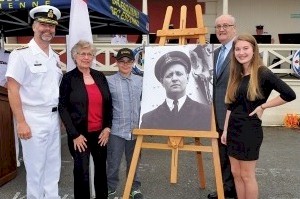
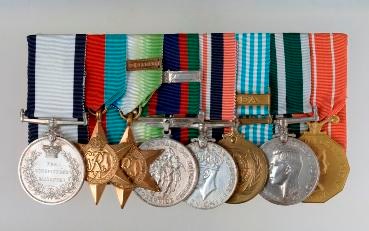
(Left)
A portrait of Chief Petty Officer (CPO) Max Bernays is unveiled during the
naming announcement of the third Arctic/Offshore Patrol Ship, held at the CFB
Esquimalt Naval and Military Museum. (L-R) Rear Admiral Bill Truelove, Commander Maritime Forces Pacific/Joint Task
Force (Pacific); Marilyn Bernays, daughter-in-law of CPO Bernays; Max
Thompson, great-grandson of CPO Bernays; Julian Fantino, Associate Minister of
National Defence; and Carly Bernays, great-granddaughter of CPO Bernays. LS
Ogle Henry, MARPAC Imaging Services (Right)
CPO Max Bernays' awards and decorations held at the Canadian War Museum |
|
|
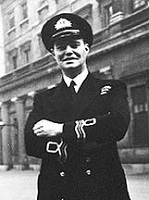
|
LCdr
Frederick Henry Sherwood, DSC w/Bar, RCNVR
A
native of Ottawa, Fred Sherwood joined the Royal Canadian Naval Volunteer
Reserve in 1933 and was one of 27 Canadians who volunteered for service in
British submarines during World War Two.
In
1940, Fred Sherwood and J. D. Woods were the first two Canadian Naval
Reservists to take the submarine officer training course. On completion, they
were offered a choice of postings - home waters (North Atlantic) or the
Mediterranean. They flipped for it, and Freddie ended up staying home while
his classmate shipped out to Alexandria, Egypt. As it turns out, J. D. Woods
made one particularly unpleasant patrol and decided submarines were not for
him.
LCdr
Sherwood served as Watchkeeping Officer in HMS SEALION from 1940 to August
1941; as First Lieutenant in HMS L23 from August 1941 to January 1942; and as
First Lieutenant in HMS P211 (later renamed SAFARI) from January to November
1942. It was while operating in the Mediterranean around Malta that he was
awarded the Distinguished Service Cross for "courage and skill in
successful submarine patrols".
In
December, 1942, he completed the legendary 'Perisher' - the Royal Navy
Submarine Command Course so named because it had a failure rate of 40-60%.
Pass, and you were guaranteed to get a submarine command. Fail, and you were
immediately returned to surface ships never to see the inside of a submarine
again. On graduation, he became Commanding Officer of HMS P556 (aka 'The
Reluctant Dragon', because frequently she didn't want to dive!), from March to
June 1943, then CO of HMS SPITEFUL from July 21, 1943 to July 24, 1946.
Under
his command, SPITEFUL completed the three longest patrols for a S-boat at the
time, sinking multiple Japanese ships. By April, 1945, SPITEFUL had bombarded
installations on the Andaman Islands and Christmas Island. "Just to keep
them on their toes."
Fred,
and his future wife Mary (herself a cipher clerk at Allied Headquarters in
Burma), married in Santiago, Chile in 1947 and spent many happy decades
together.
In
2010, a dinner was held for Canadian Perisher graduates and submarine CO's.
There, LCdr Fred Sherwood sat across from LCdr Alex Kooiman - the oldest and
newest Canadian Perisher graduates, sixty-five years apart. In July, 2011, the
Victoria Submarine Command Team Trainer, part of the Canadian Forces Naval
Operations School in Halifax, Nova Scotia, was named after him. In the words
of CANFLTLANT at the time, Commodore Larry Hickey, himself a graduate of
Perisher, "We honour a fine submarine officer who was tested in war, and
who delivered the goods. The Command Team Trainer named in his honour ensures
that Fred Sherwood will not be forgotten by the Navy writ large, and more
importantly, by the Canadian submarine community."
On
the 14th of May, 2013, Fred Sherwood passed away peacefully in Ottawa,
Ontario. In the words of his son, Tim Sherwood - "He was many things to
many people during his life, but he was always a submariner in his
heart." (Source/Credit: The
Submariners Association of Canada)
|
|
|

|
Rachel
Mari-Anna Dube (Richard) 1918 - 2009
The
name probably means nothing to most people. However, if you were in the Royal
Canadian Navy (or its post 1968 permutations) any time after 1948, there is a
very good chance you met Rachel at some point in your service.
Rachel
lived in Halifax and ran a little operation just outside RCN barracks, HMCS
Stadacona. And while most sailors in the RCN eventually passed through
barracks at Stadacona, most of those sailors also ended up in Rachel's little
restaurant, just two blocks away from the main gate.
You
see, to us sailors, Rachel was better known as Momma Camille and she served
the best fish & chips in Halifax. She was known as The woman who fed the
fleet and many a Saturday night run ashore in in "Slackers" ended at
Momma Camille's Fish & Chips.
Momma
Camille retired in 1984 although the name of her fish & chip shop can be
seen all over Nova Scotia.
She
passed on at age 90 on 22 May this year. Many a retired and serving sailor
will be hoisting a glass in thanks to Rachel for saving us from the fare of
"A" Block in "Stad".
Fair
winds and following seas, Momma Camille. (Source: Article from unknown
newspaper - 26 May 2009)
Click
here to read newspaper articles and letters of thanks to Mama Camille
|
|
|
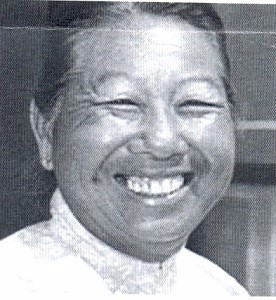
|
Ng
Muk Kah, B.E.M. (1917 - 2009)
Generations
of sailors who visited Hong Kong will mourn the death of Jenny. She was a much
loved living legend who, for all the colony’s constant change, remained the
same incomparable institution for over half a century.
Much
of her life was an enigma. However. the authors of her twenty-seven Certificates
of Service generally agreed that she was born in a sampan in Causeway Bay in
1917. Her mother, Jenny One, according to her one surviving Certificate of
Service, which was copied in 1946 from an older, much battered and largely
illegible document, ‘provided serviceable sampans for the general use of the
Royal Navy, obtained sand, and was useful for changing money‘. She brought up
her two daughters to help her.
Behind
her perpetual great gold-toothed grin Jenny complained; ‘I velly chocker. All
time work in sampan, no learn to lead or lite.’ But what she lacked in
education she made up more than a hundredfold with her immense and impressive
experience in ship husbandry, her unfailing thoroughness and apparently
inexhaustible energy, her unquestionable loyalty and integrity, her infectious
enthusiasm and her innate cheerfulness.
Officially,
Jenny’s Date of Volunteering was recorded as 1928. From then until 1997, when
the colony became a Special Administrative Region of China and the Royal Navy
moved out, she and her team of tireless girls, who at one time numbered nearly
three dozen, unofficially served the Royal and Commonwealth Navies in Hong Kong
by cleaning and painting their ships, attending their buoy jumpers, and, dressed
in their best, waiting with grace and charm upon their guests at cocktail
parties. Captains and Executive Officers would find fresh flowers in their
cabins and newspapers delivered daily. And many a departing officer received a
generous gift as a memento from Jenny. For all of this, she steadfastly refused
ever to take any payment. Instead she and her Side Party earned their keep
selling soft drinks to the ships’ companies and accepting any item of scrap
which could be found on board.
Most
treasured of all Jenny’s distinctions was the British Empire Medal awarded her
in the Hong Kong Civilian List of the Queen’s Birthday Honours in 1980 and
with which she, formally named Mrs. Ng Muk Kah, was invested by the Governor of
Hong Kong, Sir Murray MacLehose.
In
later years, Hong Kong was no longer visited by the great fleets of battleships
and cruisers which gave Jenny and her Side Party their livelihood and she found
it increasingly difficult to make ends meet. Yet she stayed fit and was always
willing to undertake any work available.
Jenny
died peacefully in Hong Kong on Wednesday 18th February 2009. She was 92 years
old. (Source: Naval
Historical Society of Australia)
- Chief
and Petty Officers' Association (Esquimalt) newsletter Bulletin" article on Jenny's Side party - Page
1 Page
2
|
|
|
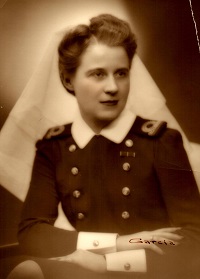
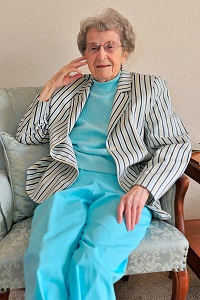
|
Margaret Martha Brooke, LCdr, RCN,
Canadian naval hero
Photo of Margaret Brooke courtesy of Department of National
Defence
Margaret Martha Brooke (BHSC'35, BA'65, PhD'71), a
palaeotologist and Royal Canadian Navy (RCN) Nursing Sister decorated for
gallantry in combat during the Second World War, died on January 9, 2016 in
Victoria, B.C. at the age of 100 years.
On April 13, 2015 the Government of Canada announced that
an Arctic/Offshore Patrol Ship (AOPS) would be named after Brooke, who holds
degrees from the U of S College of Home Economics and the Department of
Geological Sciences at the College of Arts & Science. She is the author of
several papers in the field of palaeontology.
On October 14, 1942, during a crossing of the Cabot Strait
off the coast of Newfoundland, the ferry SS Caribou was torpedoed by the German
submarine U-69. The ferry sank in five minutes. Fighting for her own survival,
Lieutenant-Commander (LCdr) Brooke also did everything humanly possible to save
the life of her colleague and friend, Nursing Sister Sub-Lieutenant Agnes Wilkie,
while both women clung to ropes on a capsized lifeboat. In spite of Brooke’s
heroic efforts to hang on to her with one arm, her friend succumbed to the
frigid water.
For this selfless act, Brooke was named a member (Military
Division) of the Order of the British Empire.
The HMCS Margaret Brooke will be the second of six Harry
DeWolf-class AOPS constructed as part of Canada's National Shipbuilding
Procurement Strategy. Construction began in 2015.
Brooke grew up in the small farming community of Ardath, SK
during the Depression. Her mother was determined that her daughter would attend
university so, in 1933, she moved to Saskatoon to attend the University of
Saskatchewan.
After earning a BHSC in 1935, she joined the Royal Canadian
Navy in 1942. She was serving as a Nursing Sister in the RCN hospital in HMCS
Stadacona, Halifax, NS, when the fateful ferry incident occurred.
After she retired from the RCN in 1962, she returned to
Saskatoon and the University of Saskatchewan where she earned a BA and then a
PhD in biostratigraphy and micro-palaeontology. She remained in the Department
of Geological Sciences as an instructor and research associate until her
retirement in 1986.
Vice-Admiral Mark Norman, Commander of the Royal Canadian
Navy, issued a statement on behalf of the RCN and the Canadian Armed Forces on
the passing of Lieutenant-Commander (ret’d) Brooke, calling her a “true
Canadian naval hero.”
Government of Canada news release
|
HOME PAGE SHIP INDEX
CONTACT
|